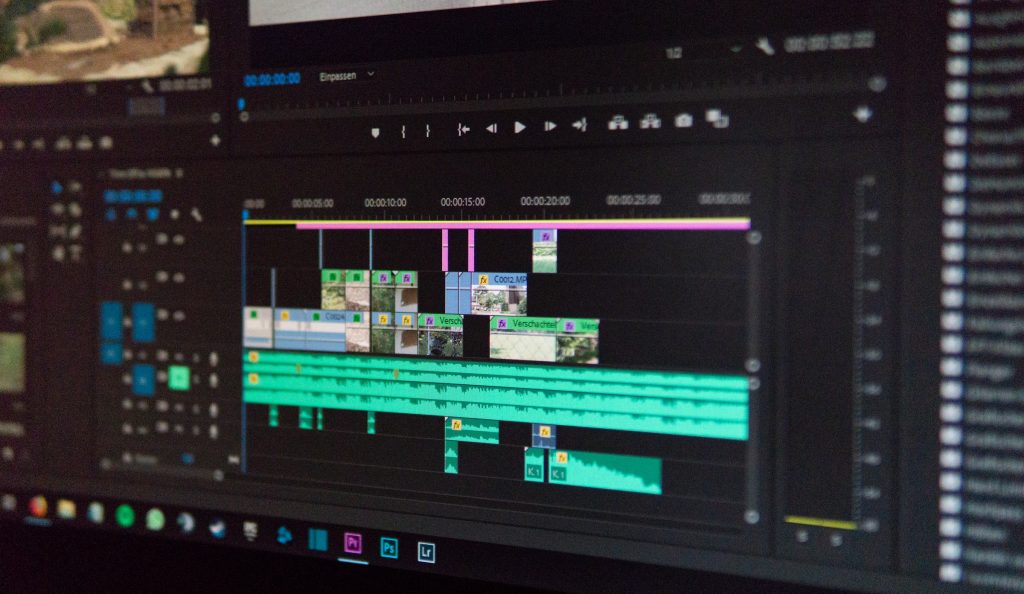How To Repurpose Blog Content
Content is the heart of your blog. So while you’re optimizing for aesthetic, loading speeds, and user experience, you shouldn’t forget about the actual content you’re posting.
Quick Links
No matter how good your blog looks, thin, spammy, and unhelpful content doesn’t encourage site visitors to stick around. People come to your blog because they find value in it. It should be informative, instructional, or entertaining. You can get people to click by using digital marketing strategies, but clicks mean nothing when people don’t stick around.
However, pouring all your creative energy into a post doesn’t automatically mean it will do well. Sometimes, you just miss the right keywords, forget to promote them properly or post them at the wrong time.
So, how do you give these great ideas a second chance?
Why Should You Repurpose Content?
In simple terms, content repurposing is taking an original piece of content and converting it into a different format. You’re basically recycling old content to maximize its potential.
For example, if you have a great blog post, you can convert it into an infographic or a video blog. Likewise, you can overhaul a poorly-performing blog post, rewrite and repackage it, and optimize it for search engines.
Content repurposing is not only a terrific go-to when you’ve hit a creative block; it’s also making the most out of a great idea.
5 Ways To Repurpose Blog Content
There are several ways to repurpose content. Some of them can be done on your own, and others require you to hire artists and other experts to do so. Whichever route you’re taking, they have their own advantages.
Here’s a list of content repurposing that you might want to try:
1. Turn It Into a Downloadable Ebook
If you have a blog series or extensive blog posts that aren’t getting that much attention, you can repurpose them as part of a compilation. This can be offered as an incentive for site visitors to subscribe to your email lists or newsletters.
Ebooks and downloadable content are often offered on landing pages. This allows you to capture information by offering content to site visitors in exchange for their email or a subscription to your email lists. Not only does this maximize the ROI of your old content, but it also helps with your email marketing strategy.
It doesn’t have to be a complete copy-paste of the material. Instead, you only take what you need from your blogs, add new information, and organize the content into a neat and helpful PDF.
2. Turn Your Blog Posts Into Infographics
Have you written an exhaustive timeline of a product or niche? Have you published a study with interesting results? Do you have a complete guide on starting a new online boutique?
Infographics can be used to efficiently represent timelines, workflows, and statistics. Instead of listing numbers, you get to represent those stats in a digestible way. Some people like reading well-organized and optimized blog posts, while others want visual representations.
Not to mention, images tend to do well on social media. Infographics are informative, concise, and easy to share. To get people to click on your blog, you can take the important points and put them in an infographic, then link to the original blog post for people who want to know more.
3. Break Up A Long Post Into A Series
There is no magic number when it comes to the best word count for blog posts. However, most SEO experts will tell you that your content should be just right—it shouldn’t be too short that it’s thin and uninformative, but it shouldn’t be too long either.
That said, people rarely want to read a 15,000-word post. Therefore, if you have an exhaustive blog post that covers a broad topic, each section should contribute to the entire theme or message of the post. Specific trivia and details that have nothing to do with the blog post deserve an entry of their own.
So if you have a long blog post that tends to go into tangents multiple times, trim it down. Whatever extraneous details that you remove could then be converted into an independent blog entry. Then, you can link those supplementary posts to your main blog entry.
Do be careful about your supplementary entries, though. Make sure that your supplemental posts are still helpful on their own and won’t qualify as thin content. If there isn’t enough to write a new post, do additional research to make a more complete blog entry.
4. Convert Blog Posts Into Videos

Do you have a well-optimized listicle that’s getting decent traffic? Or do you have a helpful advice post that’s ranking well in the search engines? Maybe you have a good idea that doesn’t do quite well in the written medium? You can convert your blogs into “vlogs” and optimize them for YouTube or other platforms.
Informative and entertaining videos do well on YouTube, TikTok, and similar platforms because they’re quick and engaging. In addition, some people prefer watching digestible video content instead of reading entire 800-word articles, so tapping into a different medium might reach new audiences.
However, you should remember that videos are an entirely different type of content, so a copy-paste of your blog won’t always work.
If you’re thinking about converting your content to vlogs, you might have to consider the following:
- The standards for good pacing, visual elements, and delivery are different.
- Platforms like YouTube and Twitter have different keywords and keyword search volumes.
- Posting them on a different platform will require different optimizations than what you usually do on your website.
5. Summarize Content For Social Media
Speaking of social media, you can also convert your blog content to fit different platforms. Let’s look at the possibilities:
- You can convert your listicle about fashion tips to short videos on TikTok and Facebook.
- Summarize helpful tips into a Twitter thread.
- If you have great advice, you can put them on Quora and Reddit.
- If you have product reviews, you can put them on YouTube.
Don’t forget to always link your blog or the main post alongside the converted content. While video views on YouTube don’t directly count towards traffic on your blog, the people you attract through posting content elsewhere helps point them back to your domain.
So think of it as an indirect way to market your blog on other platforms. Instead of just linking them for your followers to see, you’re giving them content that will convince some of them to look into your blog. If your topics interest them, they might go to your domain and see what else you already have.
Additionally, you don’t have to put the entire text of your blog into a Facebook post or an Instagram caption, but you can take portions of the content and link the main blog. Instead of strictly asking them to look at your blog, give them something they find helpful and enjoyable and attract them to your blog that way.
Author’s Bio

JC Serrano is the founder of 1000Attorneys.com, one of the very few private enterprises certified to process lawyer referrals by the California State Bar. His marketing strategies have continuously evolved since 2005, incorporating ever-changing SEO strategies into lawyerleadmachine.com.
What Is WooCommerce Product Slider and Why Your Store Needs It
Why Do Product Images Matter So Much in Online Stores? When someone visits an online store the…
0 Comments9 Minutes
How to Streamline Your Customers’ Shopping Experience?
The goal for any online store is to make shopping as smooth as possible. When visitors move…
0 Comments8 Minutes
Strengthening Brand-Customer Relationships Through Gamified Loyalty Programs
Creating lasting connections with customers has become increasingly vital as the marketplace grows…
0 Comments6 Minutes
How to Use SEO and SEA Together in Search Engine Marketing
In digital marketing, search engine marketing (SEM) plays a critical role in improving online…
0 Comments10 Minutes
Content Marketing Growth Hacks: Real Shortcuts to Drive Traffic
Are you still lagging in content marketing? Sticking to these old strategies seems…
0 Comments10 Minutes
How to Build a Strong Local Following Using Social Media Marketing
In the days of likes, shares, and stories, local businesses have a golden opportunity to create…
0 Comments9 Minutes
Why WooCommerce is the Best Choice for Your Online Store?
WooCommerce stands out as a top option for anyone looking to build an online store. This platform…
0 Comments8 Minutes
How to Use AI-Powered SEO Tools for WordPress eCommerce
SEO is a critical factor in the success of any e-commerce WordPress store. As competition…
0 Comments11 Minutes








